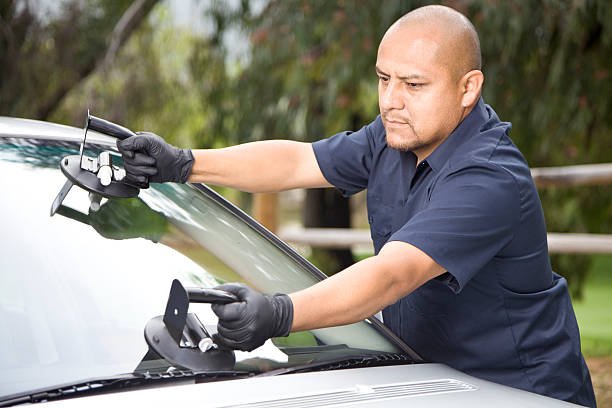

Stumbling upon a small chip in your windshield can trigger a mix of annoyance and concern, hinting at potential future complications if left unchecked. Fortunately, the silver lining is that addressing these minor blemishes is often neither complex nor costly. This comprehensive guide is designed to demystify the process of repairing small chips in your windshield, guiding you through each step with clarity and simplicity. By tackling these chips early, you're not just preserving the aesthetic appeal of your vehicle, you're also upholding the structural integrity of an essential safety barrier.
From evaluating the damage to choosing the right repair approach, this guide ensures you're well-equipped to keep your windshield in pristine condition, safeguarding your vision on the road and, ultimately, your safety and that of your passengers. With practical advice and easy-to-follow instructions, you'll find that restoring your windshield's integrity can be a straightforward task. Ensuring windshield repair quality gives you peace of mind and keeps your journeys smooth and safe.
(310) 539-6177First things first, it's essential to understand why you should never ignore a windshield chip. Even the smallest chip can quickly evolve into a large crack if left unattended. Changes in temperature, road vibrations, and even the impact of hitting a pothole can cause the chip to spread. Once a chip becomes a crack, the entire windshield may need to be replaced, significantly increasing the repair cost.
Before you decide on a course of action, assess the chip's size and location. Generally, chips smaller than a quarter can be repaired easily. If the chip is directly in the driver's line of sight, even a small repair might cause some distortion, in which case you might want to consult a professional to discuss the best options.
For those small, repairable chips, a DIY windshield repair kit is an excellent and cost-effective solution. These kits are readily available at most auto parts stores and come with everything you need: a resin that fills the chip, a syringe to remove air from the chip, and a curing film.
Step-by-Step Guide to Using a DIY Repair Kit:
Clean the Area: Begin by thoroughly cleaning the windshield around the chip. Use a glass cleaner and a lint-free cloth to ensure the area is free of dirt, debris, and glass shards.
Prepare the Surface: Apply the adhesive disc that comes with the kit directly over the chip. Ensure there are no bubbles and that the disc is centered over the chip.
Attach the Pedestal: Affix the pedestal to the adhesive disc, making sure it's securely in place. This will allow you to inject the resin directly into the chip.
Inject the Resin: Fill the syringe with the resin provided in your kit and inject it into the pedestal. This process fills the chip with resin, replacing the air within the chip and preventing it from spreading further.
Allow it to Cure: Once the chip is filled, remove the pedestal and cover the area with the curing strip provided. The resin needs to be exposed to direct sunlight to cure properly, so park your car outside if possible.
Remove Excess Resin: After the resin has cured (follow the time recommendations in your kit), peel off the curing strip. Use a razor blade to gently scrape away any excess resin from the windshield surface, being careful not to damage the glass.
While DIY kits are effective for minor chips, there are times when calling in a professional is the best course of action. If the chip is larger than a quarter, there are multiple chips, or you're uncomfortable repairing yourself, a professional windshield repair service can ensure the job is done correctly. Professional services have access to high-quality materials and employ techniques that can make the repair nearly invisible, preserving the look and integrity of your windshield.
It's worth checking with your insurance company before undertaking a repair, as many auto insurance policies cover windshield chip repairs without a deductible. This means you could have the chip repaired at no cost to you, depending on your policy. Always verify coverage before proceeding with the repair, whether you're doing it yourself or going through a professional service.

While it's impossible to avoid every potential hazard on the road, there are steps you can take to minimize the risk of windshield chips:
Keep Your Distance: Maintain a safe distance from the vehicle in front of you, especially on highways or roads with loose gravel.
Avoid Construction Areas: Whenever possible, avoid driving through construction zones, where the likelihood of encountering flying debris is higher.
Drive Carefully on Unpaved Roads: Reduce your speed and drive cautiously on unpaved roads to prevent rocks and gravel from hitting your windshield.
Repairing small chips in your windshield promptly can save you time, and money, and ensure your safety on the road. Whether you choose to use a DIY repair kit or opt for professional repair services, addressing windshield damage early is key to maintaining your vehicle's integrity. For emergency windshield repair solutions, following this guide will equip you well to handle small chips effectively, keeping your windshield clear and your journey safe.